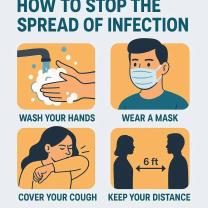How to mix DMSO?
Dimethyl sulfoxide (DMSO) is a solvent with various applications, ranging from industrial use to potential therapeutic benefits. When handling and mixing DMSO, it’s important to follow specific guidelines to ensure safety and efficacy. Here’s a detailed guide on how to mix DMSO:
Safety Precautions
Personal Protective Equipment (PPE):
- Gloves: Use nitrile gloves to protect your skin, as DMSO can easily penetrate the skin and carry other substances with it.
- Eye Protection: Wear safety goggles to prevent eye exposure.
- Clothing: Wear protective clothing to avoid skin contact.
Ventilation:
- Work in a well-ventilated area to avoid inhaling fumes.
Storage:
- Store DMSO in a cool, dry place, away from light and moisture.
Mixing DMSO with Other Substances
1. Mixing with Water
DMSO is often diluted with water for various applications. Here’s how to do it:
Determine the Concentration:
- Decide on the desired concentration of DMSO in the solution (e.g., 70% DMSO, 30% water).
Measure the Components:
- Use a clean, graduated cylinder or pipette to measure the required amounts of DMSO and water. For a 70% DMSO solution, mix 70 mL of DMSO with 30 mL of distilled water.
Combine Slowly:
- Slowly add DMSO to water, not the other way around, to minimize heat generation. Mix gently but thoroughly.
2. Mixing with Other Solvents or Substances
DMSO can be mixed with various solvents and substances depending on the application. The general steps are:
Check Compatibility:
- Ensure the substances are compatible with DMSO. Refer to safety data sheets (SDS) and other resources.
Measure Accurately:
- Use precise measurements to achieve the desired concentration.
Combine Gradually:
- Add DMSO to the other solvent or substance slowly to prevent excessive heat and ensure even mixing.
Considerations for Specific Uses
1. Topical Applications
If using DMSO for topical applications, it is crucial to ensure the solution is appropriately diluted and free of contaminants:
Dilution:
- Common dilutions for topical use are 70% or lower. Start with a lower concentration to test skin sensitivity.
Purity:
- Use pharmaceutical-grade DMSO to avoid impurities.
Clean Application Area:
- Ensure the skin is clean and free of other substances to prevent unwanted compounds from being absorbed.
2. Therapeutic Uses
For potential therapeutic applications, always consult with a healthcare professional. Here are some guidelines:
Dosage and Concentration:
- Follow recommended dosages and concentrations as advised by a healthcare provider.
Carrier Substances:
- If using DMSO as a carrier for other medications, ensure those medications are safe and intended for such use.
Mixing Equipment
Containers:
- Use clean, chemical-resistant containers (e.g., glass or certain plastics) to mix and store DMSO solutions.
Stirrers:
- Use glass stir rods or magnetic stirrers for mixing. Avoid metal stirrers unless confirmed to be non-reactive with DMSO.
Disposal
- Dispose of DMSO and its solutions according to local regulations. Do not pour large quantities down the drain.
Summary
Mixing DMSO requires careful handling, accurate measurements, and consideration of safety and compatibility with other substances. Always prioritize safety by using appropriate PPE and working in a well-ventilated area. Whether diluting DMSO with water or mixing it with other solvents, proceed slowly and methodically to ensure proper mixing and avoid unwanted reactions. For therapeutic uses, consultation with a healthcare professional is essential.
What are the proper techniques for mixing DMSO?
Due to the potential risks associated with DMSO, it is important to emphasize consulting a medical professional before using it for any purpose. They can advise on proper use and potential interactions with any medications you're taking.
However, if you are still looking for information on mixing DMSO, here are some general safety guidelines to keep in mind:
- Always wear gloves: DMSO can be absorbed through the skin and may cause irritation or allergic reactions. Wear protective gloves when handling DMSO, even when diluting it.
- Use in a well-ventilated area: DMSO has a garlic-like odor and can irritate the respiratory system. Ensure proper ventilation when working with it.
- Never mix DMSO with undiluted chemicals: DMSO is a strong solvent and can have unpredictable reactions with certain chemicals. It's best to avoid mixing it with concentrated chemicals unless under the guidance of a qualified professional.
- Start with a low concentration: If you're using DMSO for a specific purpose, begin with a diluted solution and gradually increase the concentration as needed. Always follow recommended dilution ratios for the intended use.
- Use sterile equipment: If using DMSO for medical purposes, ensure all equipment used for mixing and application is sterilized to prevent contamination.
Additional Considerations:
- Source of DMSO: DMSO for medical purposes should be obtained from a reputable medical supply store. Avoid using industrial grade DMSO.
- Storage: Store DMSO in a cool, dark place in a tightly sealed container.
Remember: This information is for informational purposes only and should not be construed as medical advice. Always consult a doctor before using DMSO or any other substance for medicinal purposes.













